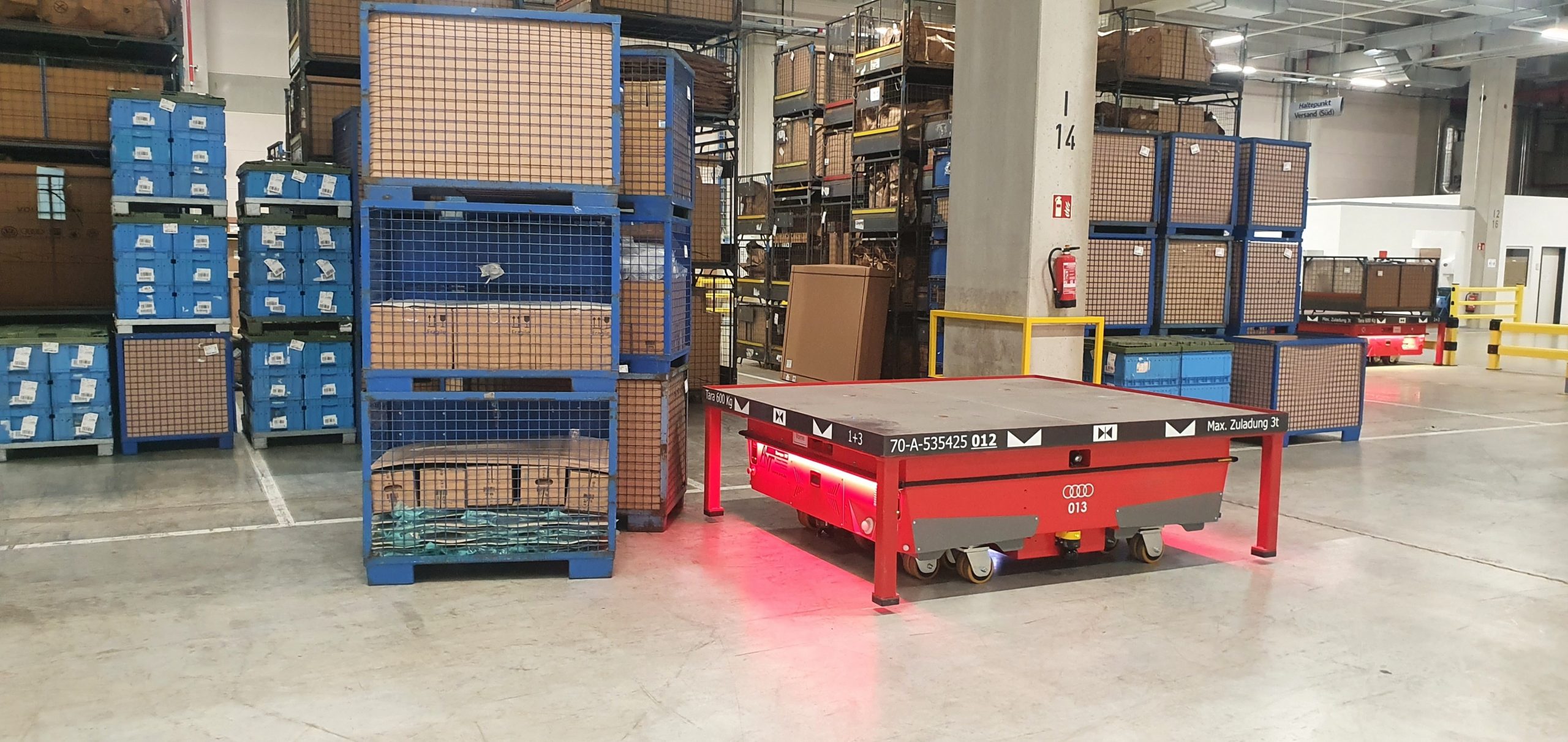Why safety matters in AGV projects
Automated Guided Vehicles (AGVs) are transforming the way industries manage material handling and intralogistics.
From moving pallets in distribution centres to transporting heavy loads in manufacturing plants, AGVs are designed to optimize efficiency, reduce labour costs, and ensure consistent throughput.
However, as with every automated system, safety must remain the top priority. Without proper safeguards, AGVs can introduce new risks: collisions with people, unintended movements, or malfunctions that jeopardize entire production processes.
This is where ISO 3691-4:2023 comes into play. The standard provides a globally recognized framework for ensuring that AGVs and AMRs (Autonomous Mobile Robots) operate safely in industrial environments.
Adopting ISO 3691-4 is not merely a compliance step—it is a strategic choice that influences operational reliability, employee well-being, and long-term competitiveness.
Core Elements of the Standard Include:
- Functional Safety Requirements – Ensuring control systems meet defined safety performance levels (e.g., emergency stop functions, monitored stop states, safe speed monitoring).
- Protective Measures – Integration of sensors, bumpers, safety scanners, emergency buttons, and warning signals to minimize the risk of collisions.
- Operational Controls – Setting speed limits, safe braking distances, and clear paths to minimize hazards.
- System Validation and Testing – Verification that the AGV operates safely in real-world conditions and under varying load situations.
- Documentation and Transparency – Detailed technical files must accompany every AGV project, ensuring audits and inspections can be passed without issues.
By applying ISO 3691-4, companies create systems that are predictable, auditable, and globally recognized as safe.
Historical Context: From Factory Automation to ISO 3691-4
AGVs were first introduced in the 1950s as simple tow-tractors following wires embedded in the factory floor. Over time, as industries demanded greater flexibility, AGVs evolved with laser guidance, vision-based navigation, and advanced fleet management systems. 
With these technological leaps, safety requirements became more complex. Earlier standards, like ISO 13849 (functional safety of control systems) and IEC 61508, covered general machine safety but did not fully capture the unique challenges of mobile robotics.
ISO 3691-4 was developed to close that gap. By focusing specifically on mobile automation, the standard consolidates decades of lessons learned from incidents, near-misses, and industry best practices.
Why compliance matters?
Compliance with ISO 3691-4 is about much more than ticking boxes. It touches multiple layers of business operations:
-
Worker safety
-
Operational reliability
-
Customer trust
-
Legal protection
-
Future readiness
Misconceptions About AGV Safety
Despite clear guidelines, misconceptions persist. Some of the most common include:
- “The supplier is solely responsible for safety.”
Safety is a shared responsibility. While suppliers provide compliant systems, integrators must adapt safety features to the site, and end-users must ensure safe operation and maintenance.
- “Safety measures reduce efficiency.”
Properly designed systems optimize flow. For example, zone-based speed control allows AGVs to move quickly in safe zones but slow down near intersections. This reduces accidents without compromising productivity.
- “Once validated, the system stays safe forever.”
Regular audits, updates, and revalidations are required. Changes in layout, loads, or workflows can introduce new risks that must be reassessed.
Technical Deep Dive: Functional Safety, Sensors, and Braking
Functional Safety (ISO 13849 & ISO 3691-4):
AGVs use control systems to ensure safety-critical functions like emergency stops, safe speed monitoring, and direction control. These must meet specific safety performance levels (SIL/PL ratings). For example, an emergency stop typically requires Performance Level d (PLd).
Sensor Technology:
- Laser Safety Scanners (LIDAR): Detect humans or objects and create protective fields (warning and stop zones).
- Bumpers and Contact Strips: Provide last-resort physical safety measures.
- Vision Systems: Cameras and AI algorithms predict hazards and obstacles.
- Ultrasonic and Infrared Sensors: Useful for short-range detection, especially in docking or loading operations.
Braking Calculations:
ISO 3691-4 defines stopping distances depending on speed, load, and braking system performance.
For instance:
- A 2-ton AGV moving at 1.5 m/s requires ~2.5 m braking distance.
- With a 5-ton AGV, stopping distance may exceed 4 m depending on surface friction.
These calculations are critical for setting scanner detection fields.
Practical steps toward compliance
-
Step 1: Risk assessment
-
Step 2: System design
-
Step 3: Validation and testing
-
Step 4: Documentation
-
Step 5: Training & awareness
Conclusion
ISO 3691-4:2023 is the foundation of safe, reliable AGV deployment. By validating braking, implementing certified sensors, requesting transparent documentation, and ensuring proper training, suppliers and end-users create safer, future-ready automation.
Compliance is about more than avoiding accidents — it builds trust, efficiency, and resilience into every AGV project.

